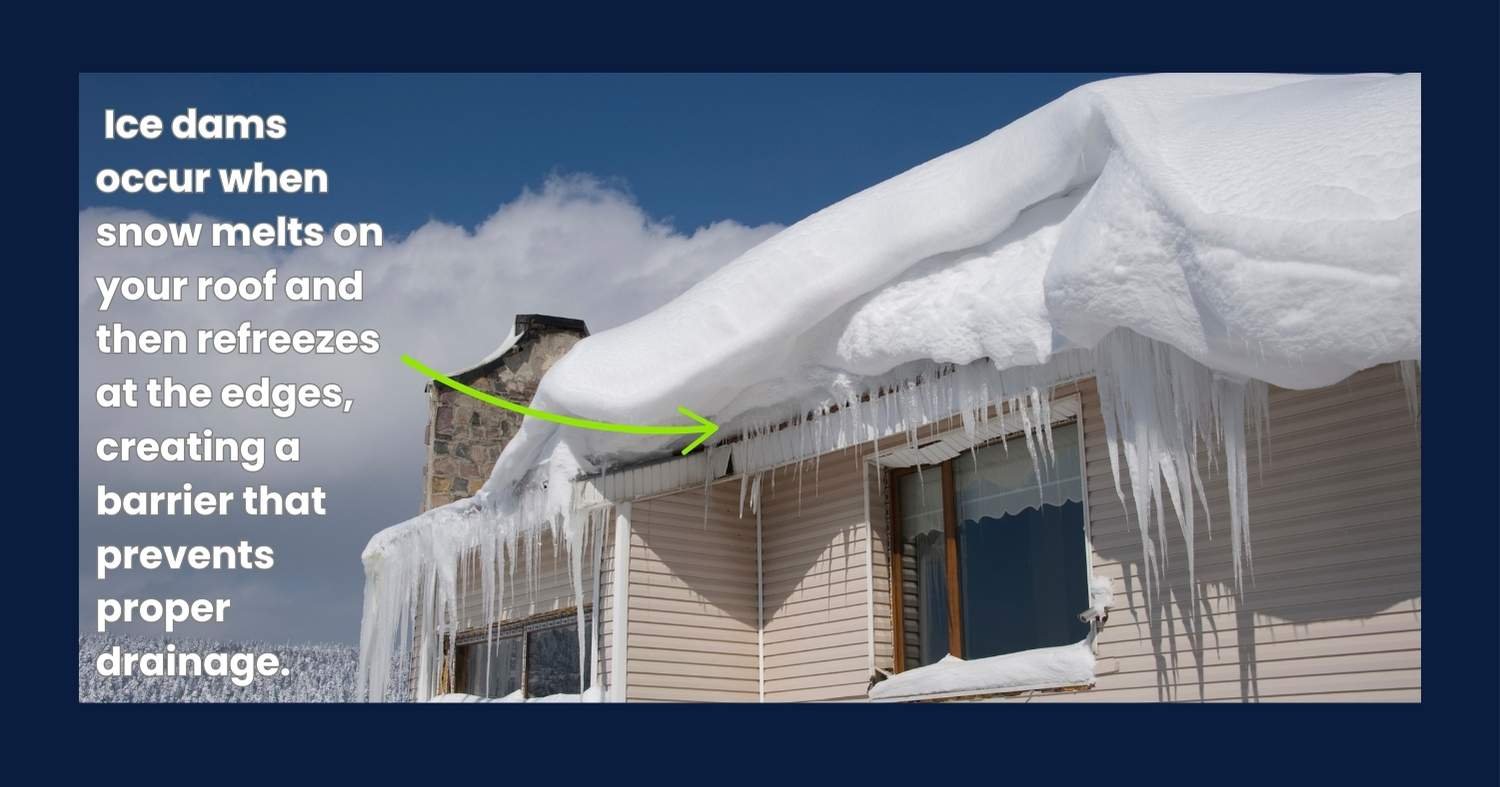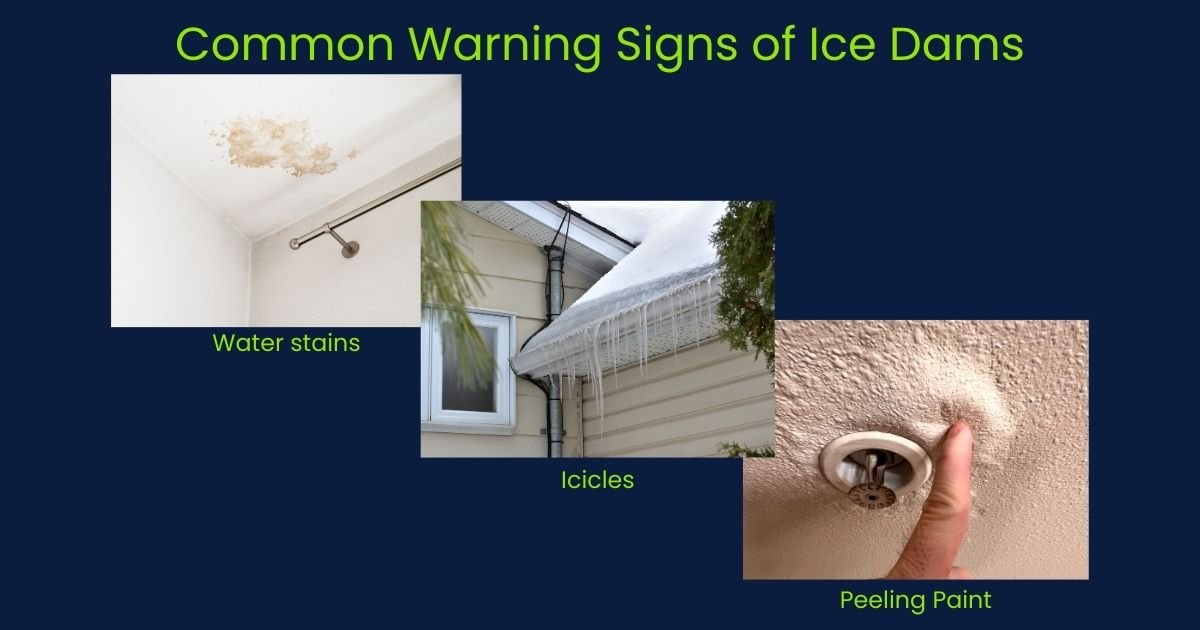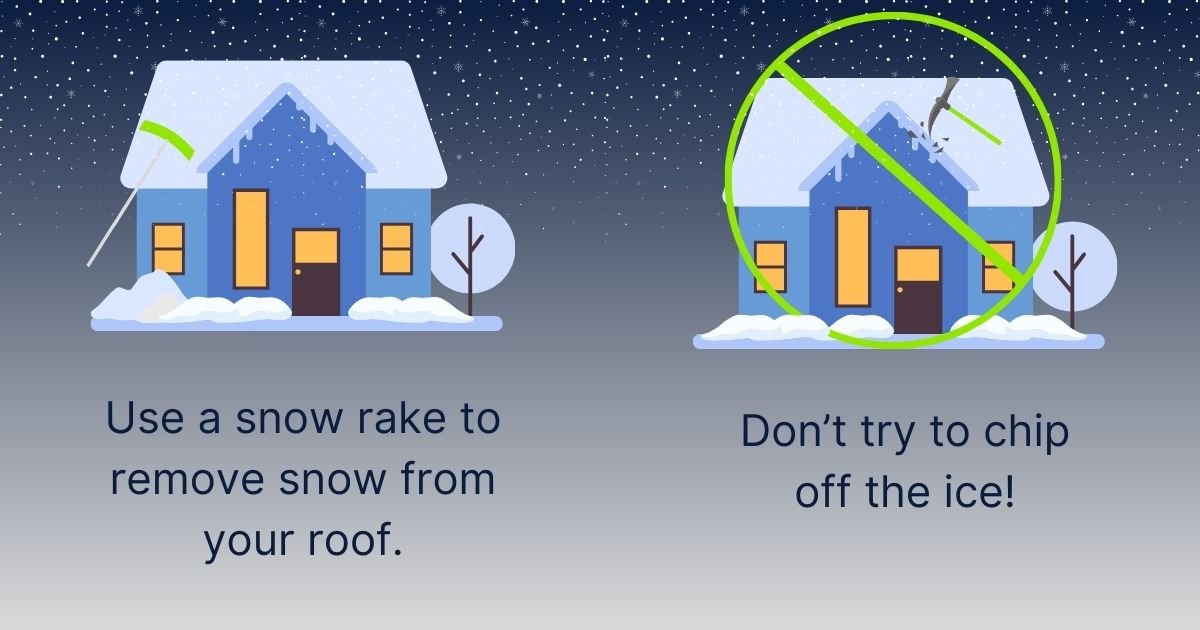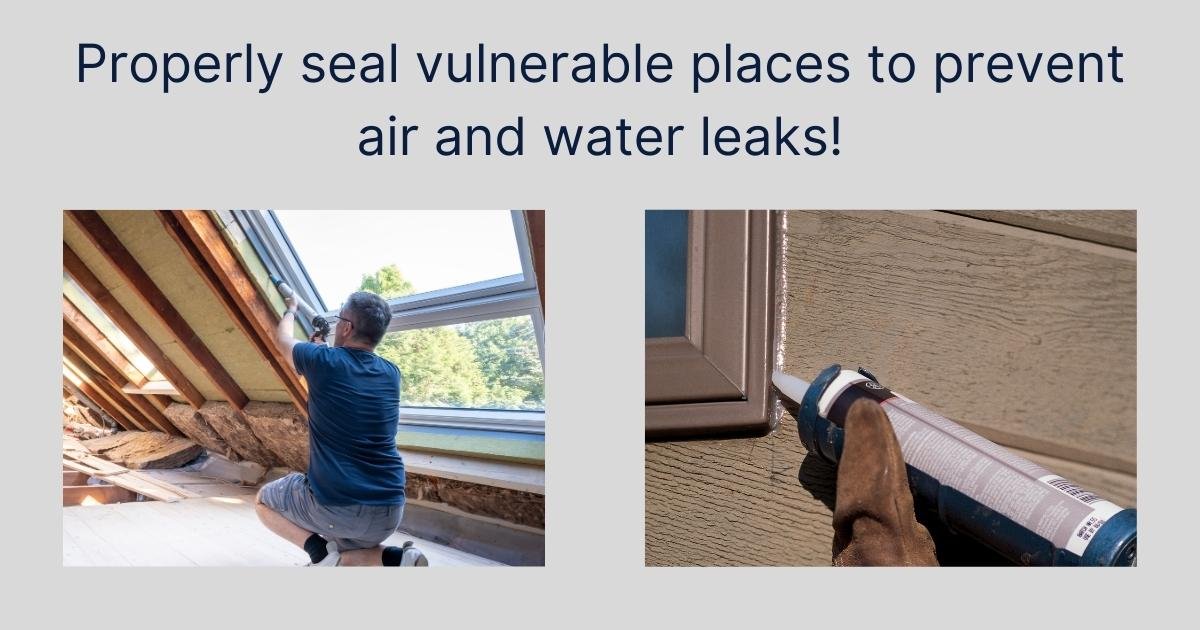Top Tips to Effectively Prevent Ice Dams This Winter
Picture this: It's a crisp winter morning, and you're admiring those gorgeous icicles hanging from your roof. They may look like winter wonderland decorations, but here's the chilly truth – those icicles might be warning signs of ice dams, one of winter's sneakiest home invaders. Don't worry though! As your friendly neighborhood insulation experts, we're here to help you understand and prevent ice dams before they turn your cozy home into an igloo with a leaky roof.
What Are Ice Dams and Why Do They Occur?
Let's start with the basics. Ice dams happen when the snow melts on your roof and then freezes again, causing a “dam” to occur, which prevents future snow and melted snow to flow off the roof. Think of it like a frozen waterfall on your roof – pretty to look at, but potentially devastating to your home. This can be dangerous because the melting water must go somewhere and often travels back up underneath the roofing material.
Understanding Roof Ice Dams and Their Causes
In northern climates with significant snowfall, ice dams form through a perfect storm of conditions. Your home becomes a temperature battleground where warm air and cold air compete, with your roof caught in the middle. The real troublemaker isn't your roofing material or ventilation systems – it's heat loss from your home's interior.
When attic air gets too warm (above 32°F), it creates the perfect conditions for both ice dam formation and potential roof failure. The process starts when heat escapes through air leaks in your ceiling or poorly insulated areas, warming the underside of the roof. This leads to snow melting higher up on the roof, while the eaves stay cold enough for that melting snow to refreeze.
Warning Signs of Ice Dam Damage
Before we dive into prevention, let's talk about how to spot ice dams forming in your home. When snow melting and refreezing cycles begin, keep your eyes peeled for these warning signs:
Icicles forming along your roof's edge (while beautiful, they're often the first sign of trouble)
Ice buildup in your gutters and down spouts
Water stains on interior ceilings, especially near exterior walls
Moisture or dampness in your attic space
Peeling paint or sagging drywall
Your Guide to Preventing Ice Dams
Let's break down exactly how to keep your home ice-dam-free this winter. The key is taking a comprehensive approach that addresses all the major causes of ice damming.
1. Proper Attic Insulation: Your First Line of Defense
Think of attic insulation as your roof's winter coat. Here’s the benefit:
Adding insulation to your attic floor helps prevent heat loss
Aim for an R-value of at least R-50 in northern climates
Proper insulation prevents heat loss from your living space into the attic
When properly insulated, your entire roof stays the same temperature
2. Seal Those Sneaky Air Leaks
Air leaks are like tiny chimneys, pumping warm air right into your attic. Common culprits include:
Unsealed attic hatch (a major source of heat loss)
Recessed lights and vent pipes
HVAC ducts that need better sealing
The intersection where your house framing meets interior ceilings
Pro tip: Use canned spray foam or fire stop sealant to seal these air leaks properly.
3. Ventilation: The Key to a Balanced Roof Temperature
Good ventilation keeps your roof temperature consistent across the entire roof. To achieve this:
Install sealed can lights to prevent heat escape
Ensure you have continuous soffit vents
Install a ridge vent paired with proper soffit ventilation
Keep air flowing freely between soffit vents and your ridge vent
Remove any obstacles that might block ventilation systems
4. Snow Management: Keeping Heavy Snow Loads at Bay
After large amounts of snowfall, it's important to manage the snow on your roof:
Use a roof rake or snow rake to remove excess snow
Focus on the bottom 3-4 feet of the roof
Be careful not to damage your roofing material
Consider installing heated cables in problem areas
5. Professional Solutions Worth Considering
Sometimes you need professional intervention to:
Install sealed can lights properly
Spread fiber reinforced mastic on duct connections
Insulate ducts in unconditioned spaces
Install proper ventilation systems including soffit vents and ridge vent
Add attic insulation to achieve optimal R-values
Emergency Ice Dam Management: What to Do Right Now
When ice dams form on your roof, quick action can prevent serious damage to your home. The first step is managing any snow on the roof safely. Using a roof rake, carefully remove snow from the bottom 3-4 feet of your roof surface. This helps prevent additional ice buildup and gives existing melting snow a clear path to your down spouts. However, never try to chip away at existing ice – this can severely damage your roof shingles and create an even bigger problem.
Keep a close eye on your exterior walls and interior ceilings during this time. Water stains or dampness could indicate that ice dam damage has already begun. Pay special attention to your down spouts – proper drainage is crucial for preventing further ice buildup and potential roof failure.
When to Call the Professionals
Sometimes, DIY methods aren't enough to combat ice dams. Professional help becomes essential when you notice water staining on your interior ceilings or discover improperly vented exhaust ducts. A qualified professional can assess your ventilation systems and determine if you need additional measures like installing sealed can lights or improving your soffit vents.
During their inspection, professionals will look for signs of inadequate attic insulation and problematic air leaks around vent pipes and dryer vents. They'll also check if your ridge vent paired with continuous soffit vents is working effectively to maintain proper air temperatures throughout your attic space.
Contact experts immediately if you notice:
Water stains on interior ceilings
Improperly vented exhaust ducts
Signs of significant ice buildup
Potential roof failure from heavy snow
Ice dam damage that's already occurred
Long-Term Prevention Strategies
The most effective way to prevent ice dams starts with understanding how warm air movement affects your roof temperature. When attic air gets too warm, it creates the perfect conditions for both ice dam formation and potential structural issues. Proper attic insulation prevents heat loss from your living spaces, keeping the underside of the roof at the same temperature as the exterior air.
Air sealing plays an equally important role. Even small air leaks around an unsealed attic hatch or recessed lights can pump enough warm air into your attic to cause problems. Professional contractors often use canned spray foam or fire stop sealant to seal these vulnerable areas, particularly where house framing meets interior ceilings.
Insulation and Air Sealing
Ensure proper attic insulation (minimum R-50 for northern climates)
Seal all air leaks around:
Vent pipes
Exhaust ducts
Recessed lights
Any unsealed attic hatch
Check that HVAC ducts are properly sealed and insulated
Ventilation Solutions
Ventilation might seem counterintuitive when talking about keeping heat in, but it's essential for preventing ice dams. A properly ventilated attic space helps maintain consistent roof temperature from edge to peak. This means installing continuous soffit vents and ensuring they work in harmony with your ridge vent. The goal is to keep air flowing freely under the underside of the roof, preventing the melting-freezing cycles that lead to ice damming.
Install continuous soffit vents
Pair ridge vent with proper soffit ventilation
Ensure proper airflow through your attic space
Maintain clear paths for air movement under the underside of the roof
Making Your Home Winter-Ready
As winter approaches in northern climates, taking preventive action becomes necessary. Start by scheduling a professional assessment of your attic insulation levels. Experts can identify potential trouble spots, like air leaks around HVAC ducts or whole house fan openings, before they lead to ice dam formation.
Remember that significant snowfall doesn't mean inevitable ice dams. With proper insulation that prevents heat loss, well-maintained ventilation systems, and regular monitoring of snow on the roof, you can keep your home protected all winter long.
Final Thoughts: Your Winter Protection Plan
Remember, preventing ice dams isn't just about protecting your roof - it's about creating an energy-efficient, properly insulated home that can stand up to whatever winter throws at it. Here's your action checklist:
Address insulation levels in your attic floor
Seal any air leaks that could lead to heat loss
Ensure proper ventilation from soffit vents through ridge vent
Monitor snow accumulation and use a snow rake when needed
Consider professional assessment for comprehensive protection
Don't wait until you see icicles forming or notice water stains on your interior ceilings. Taking action now can prevent costly repairs later. Want to make sure your home is ready for winter? Our team at Argyle Bros Insulation specializes in preventing ice dams through proper insulation and air sealing. We'll help ensure your home stays warm, dry, and protected all winter long.
Remember: A properly insulated home is your best defense against ice dams and heat loss. Contact us today for a professional assessment of your home's insulation needs!






